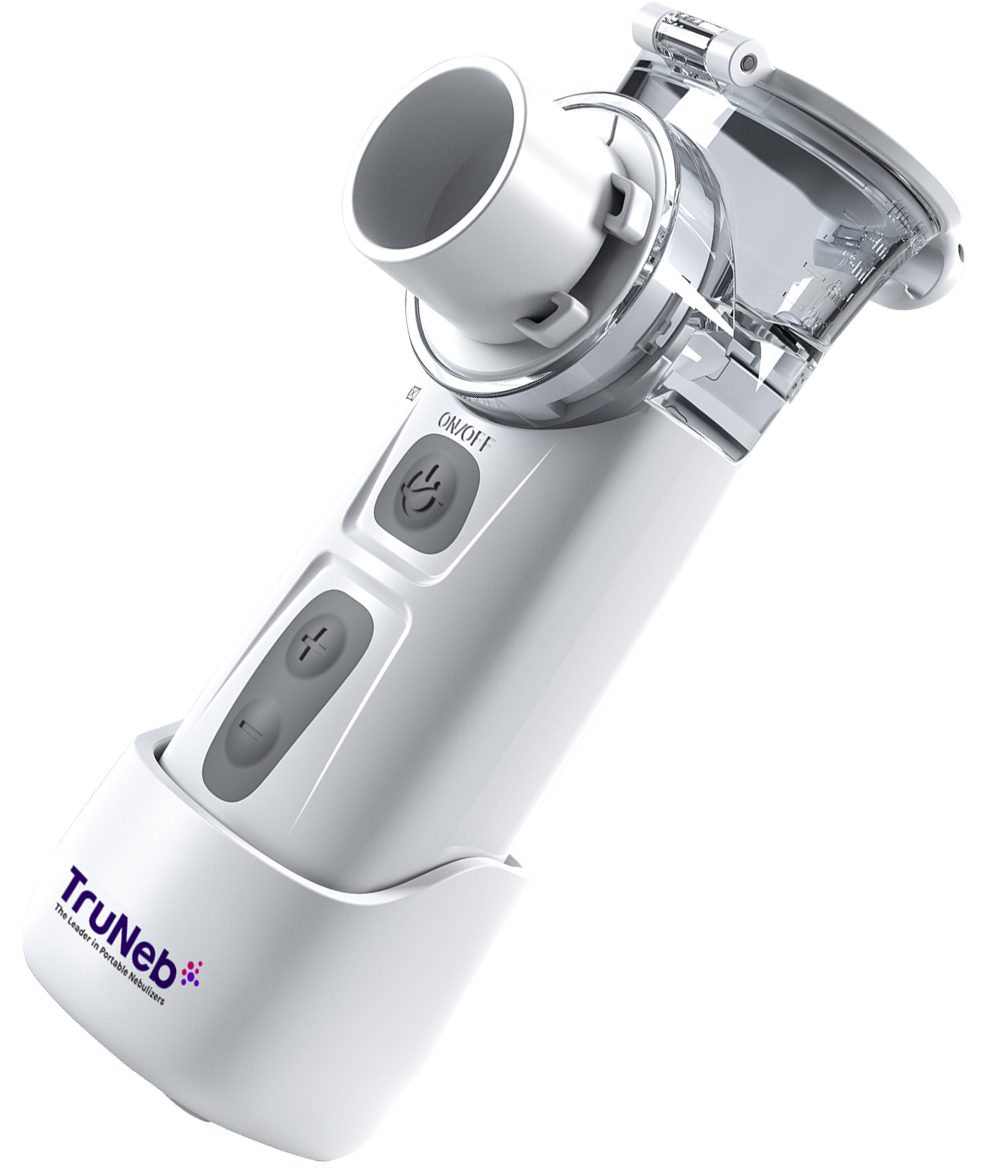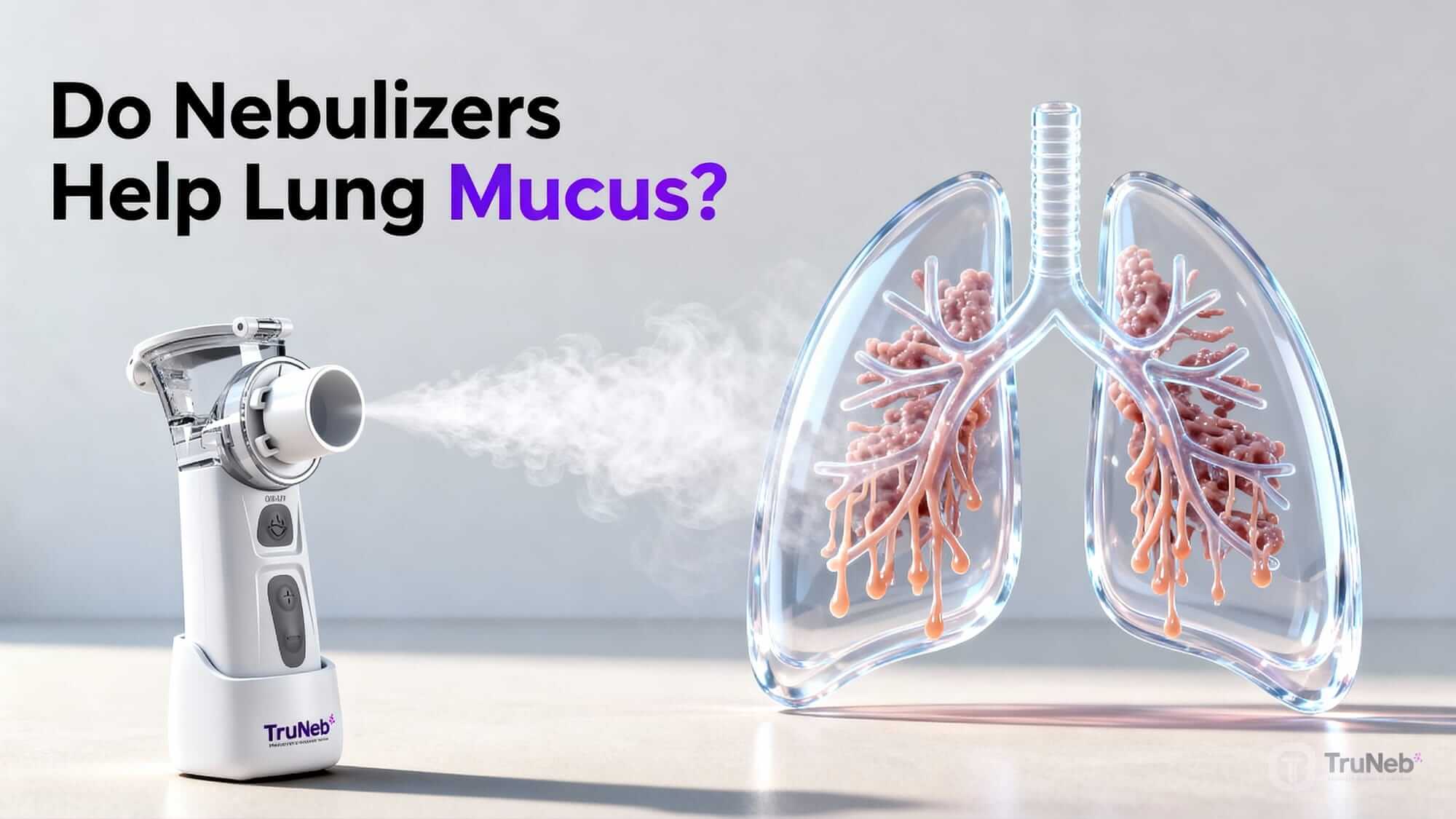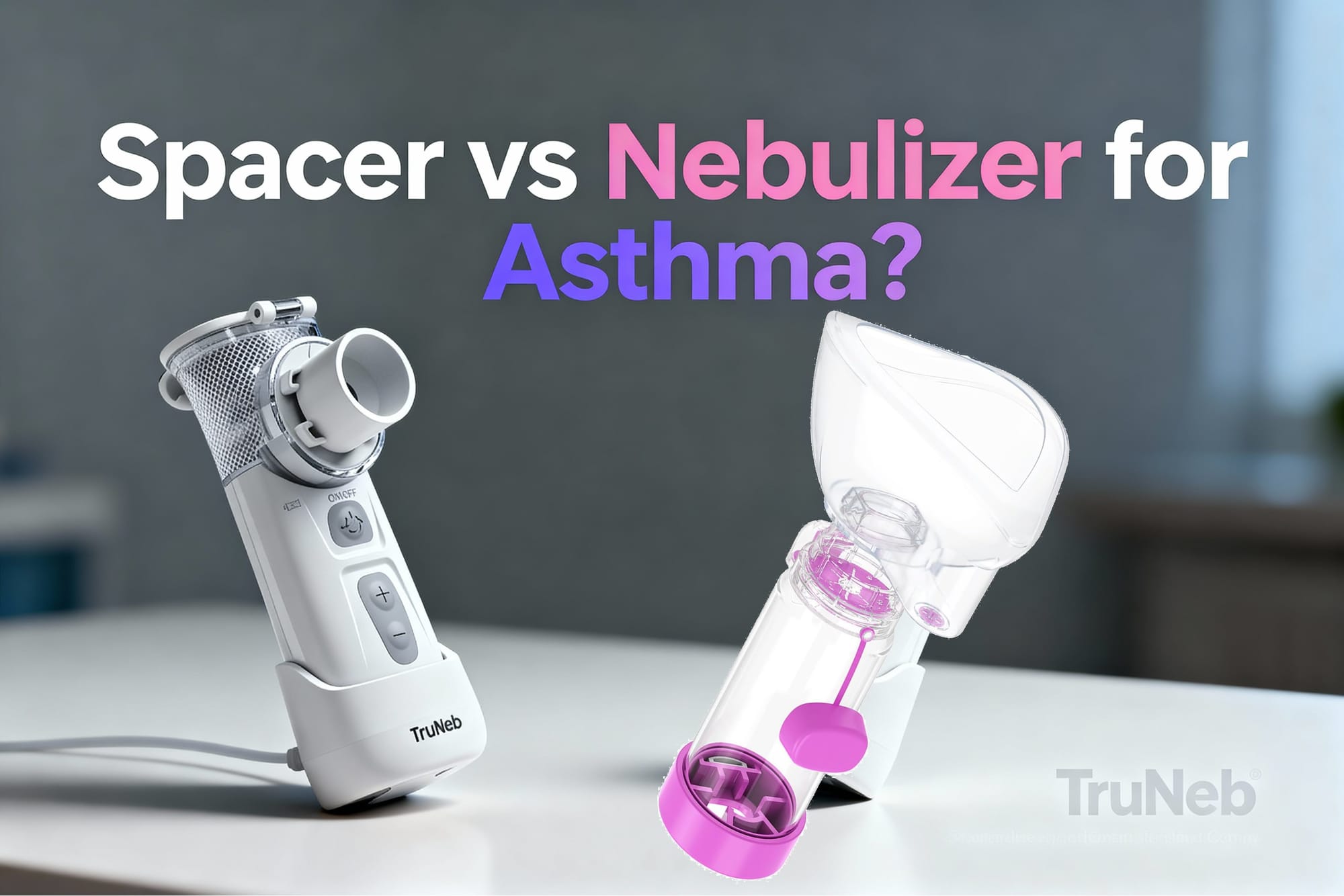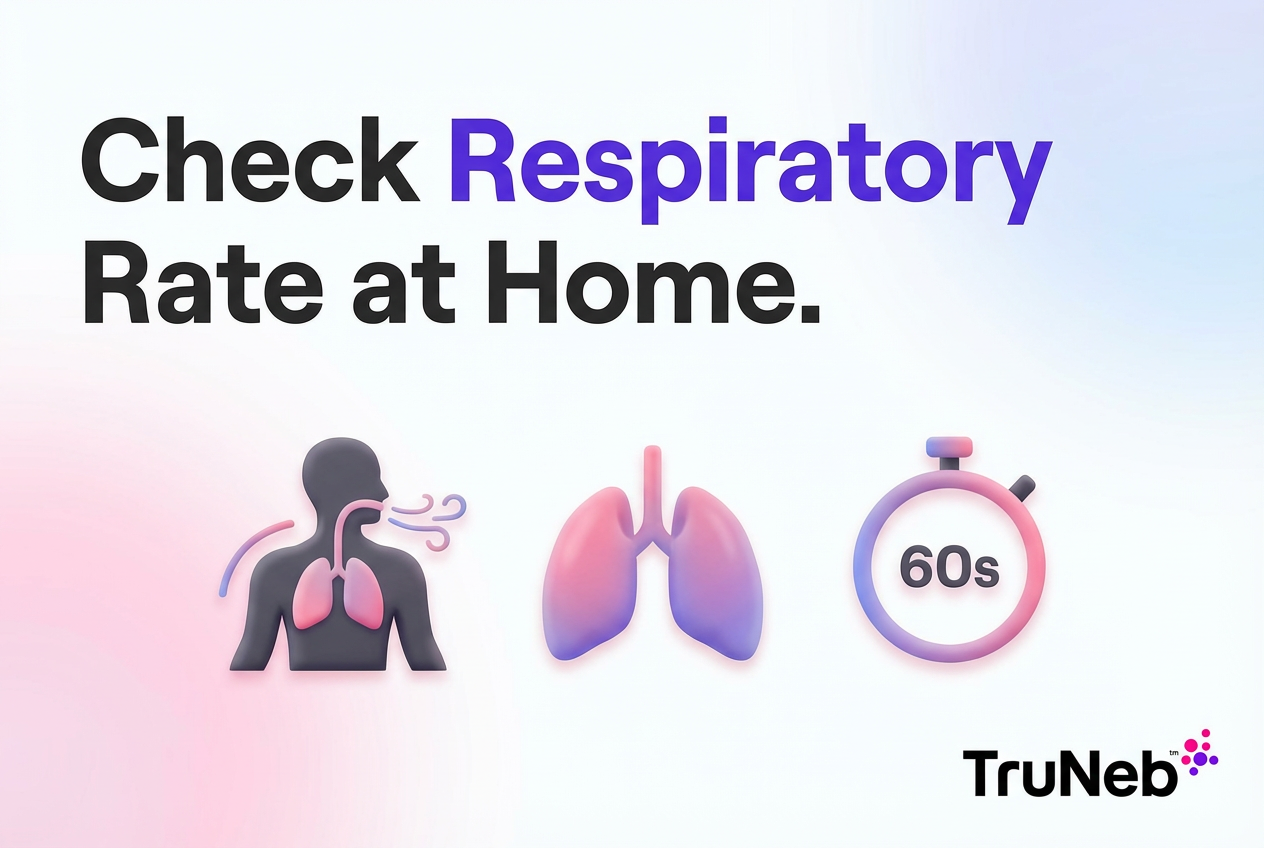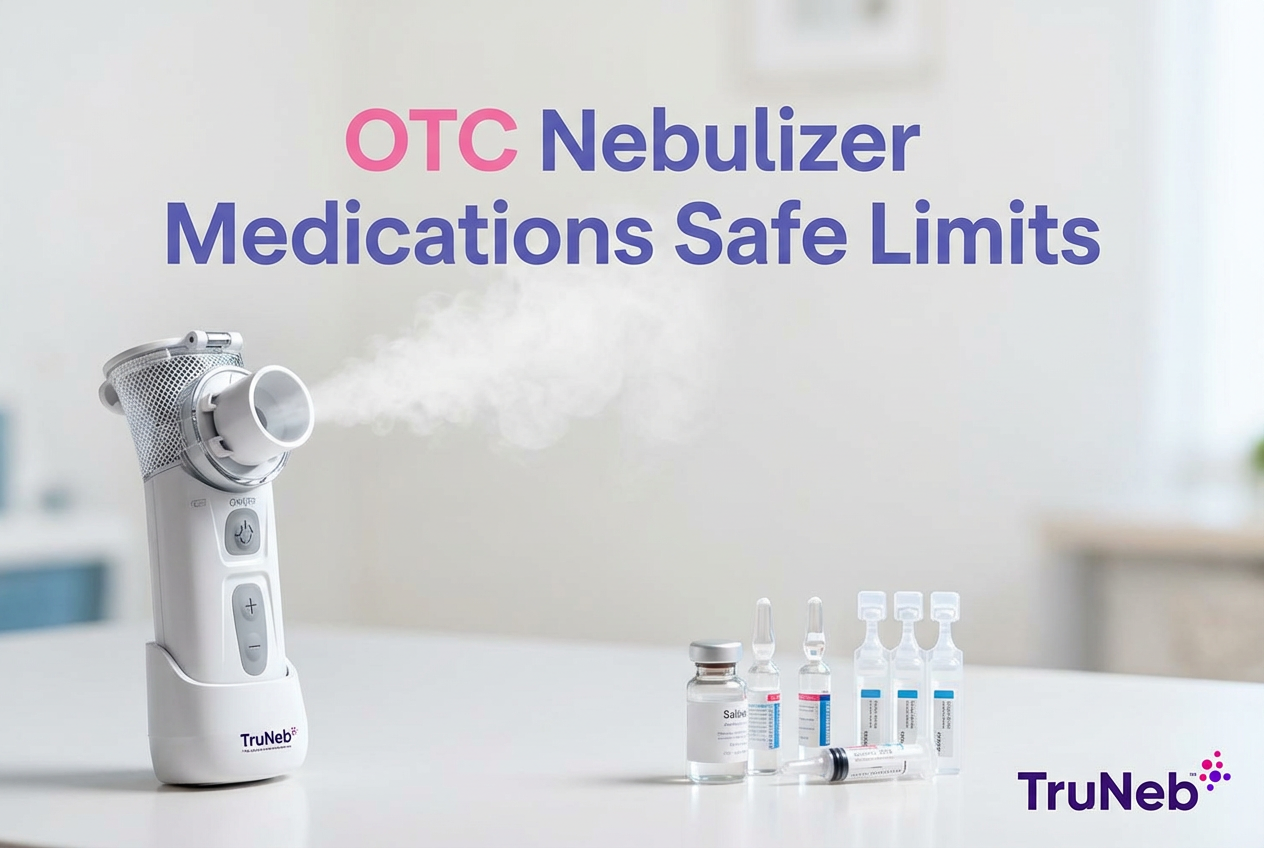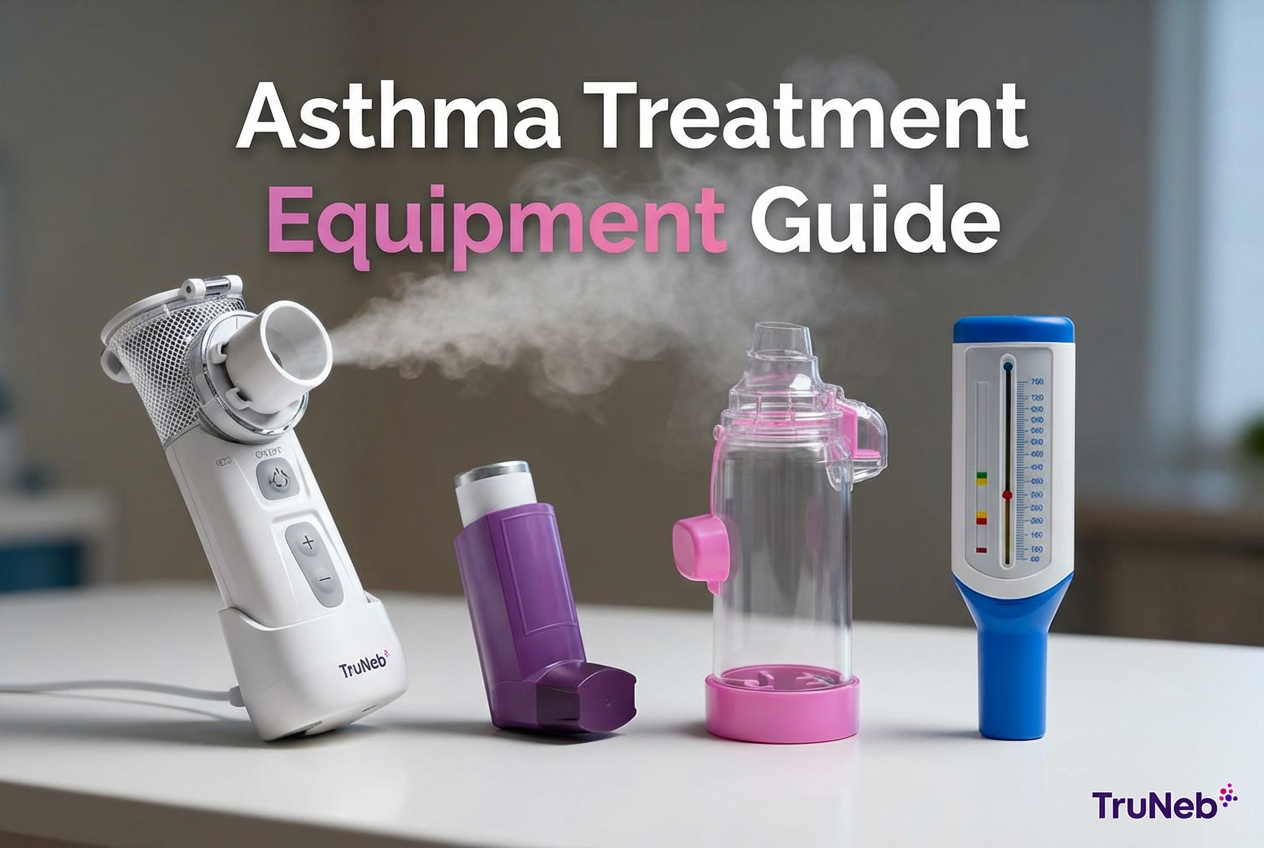On this page
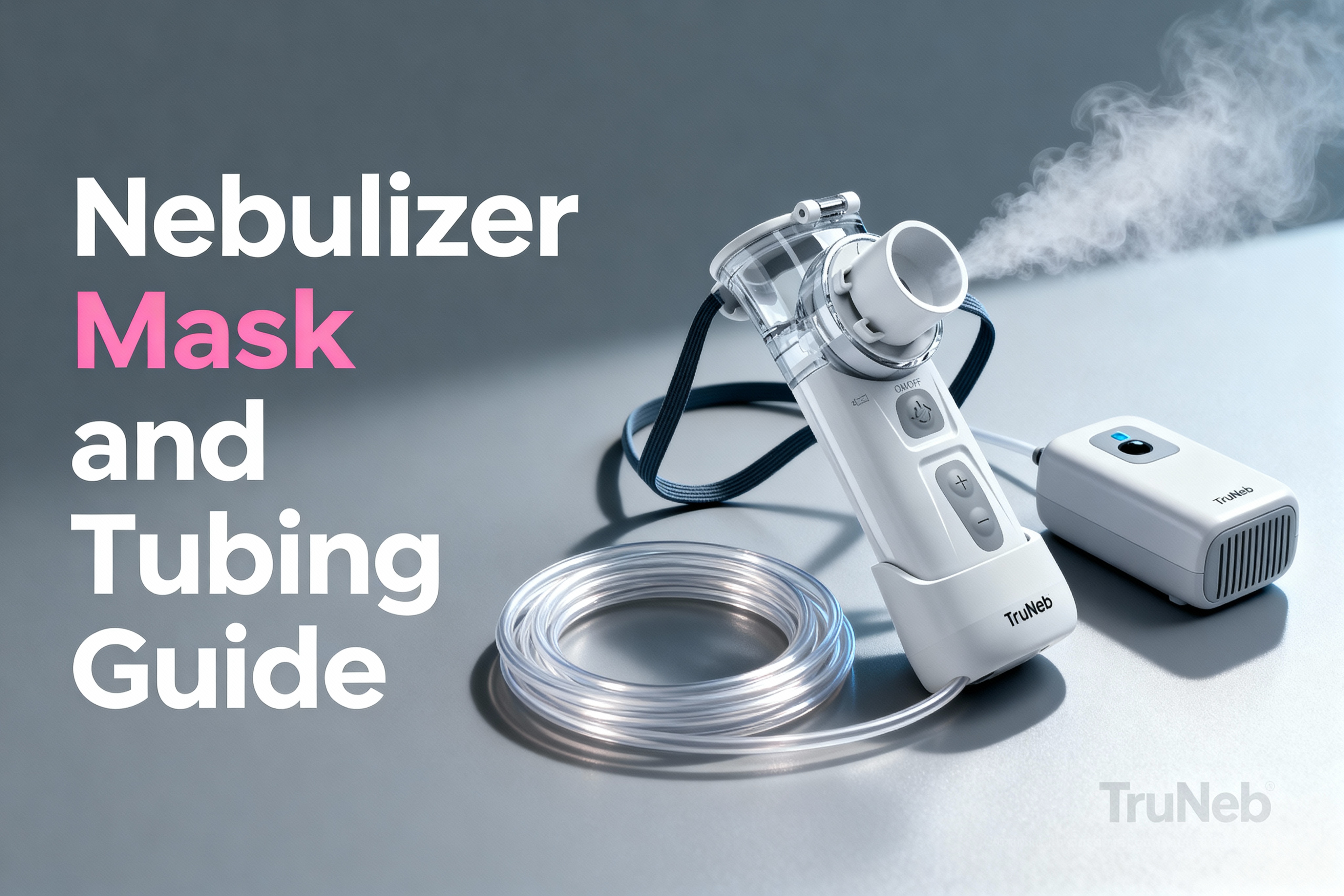
What Are Nebulizer Masks and Tubing?
A nebulizer mask is a soft face mask that covers your nose and mouth so you can breathe in medicated mist. Nebulizer tubing is the flexible hose that connects the nebulizer machine (compressor) to the medicine cup to push air through and make that mist.
Doctors use nebulizers for conditions like asthma and COPD.
How it all works: the compressor sends air through the tubing into the medicine cup. The cup turns liquid medicine into a fine mist. The mask (or a mouthpiece) delivers that mist into your lungs.
One‑liner: A nebulizer mask delivers the mist; the tubing delivers the airflow that makes the mist.
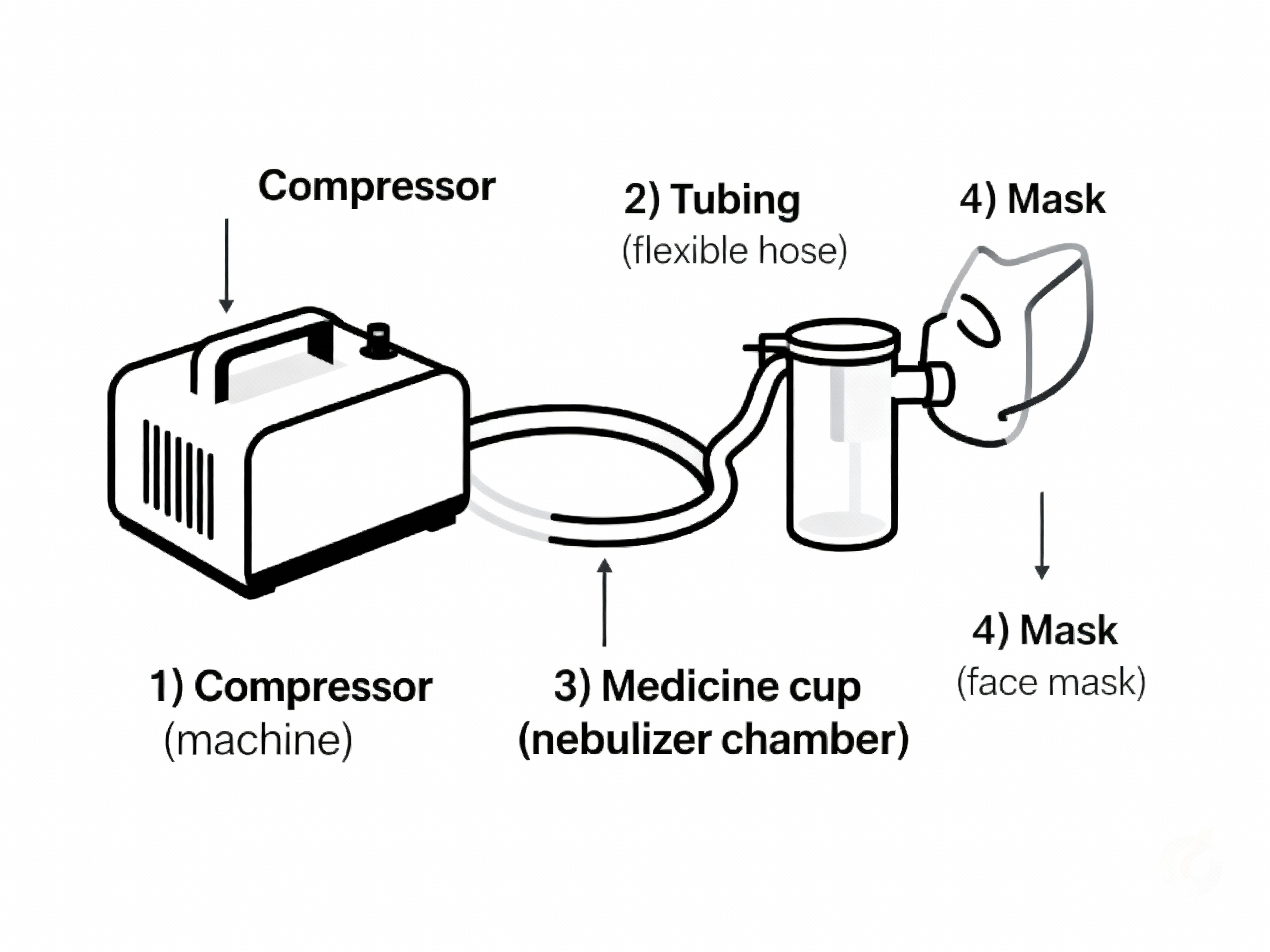
Types of Masks and Standard Tubing Length
Masks come in adult and pediatric sizes. Pediatric masks are smaller and often shaped or decorated (fish, dinosaur) to help kids cooperate. Size matters. An adult mask on a child will leak. A child mask on an adult won’t seal well. When choosing a pediatric vs adult nebulizer mask, go with the size that seals on the face.
Most home nebulizer tubing is about 7 feet long. The ends are standard and usually fit across brands, so “universal” tubing often works with most compressor machines.
One‑liner: Pick the mask size that seals on the face; most tubing is a standard 7‑foot length with universal ends.
Getting the Right Fit
A good mask fit means a snug seal over the nose and mouth with minimal gaps at the cheeks. The elastic strap should hold the mask in place without pinching. For kids, a correct size plus a gentle hold can help them stay still. If the mask is too big or too small, medication can leak, and treatment can be less effective.
Tip: Fun pediatric designs can help a nervous child accept the mask and breathe calmly.
One‑liner: No seal, less medicine — a snug mask fit helps more mist reach the lungs.
Are Nebulizer Masks and Tubing Universal?
In most cases, yes. Nearly all home compressor nebulizers use standard tubing ends, so replacement tubing from one brand usually fits another. Masks typically connect to the medicine cup with a standard fitting. For most home setups, a universal nebulizer mask and tubing can work across brands.
One exception to watch for: front‑loading vs bottom‑loading masks. Bottom‑loading masks attach vertically on top of the cup (most common). Front‑loading masks attach from the side and need matching sets or an adapter. A bottom‑loading mask won’t fit a front‑loading kit without the adapter.
TruNeb™ tip: A portable mesh nebulizer like the TruNeb™ portable mesh nebulizer doesn’t use long tubing. The mask or mouthpiece connects directly to the device’s outlet. Check your device’s manual for compatible mask attachments.
One‑liner: Most kits are cross‑compatible; watch for front‑ vs bottom‑loading mask styles when mixing parts.
Nebulizer Mask vs Mouthpiece: Which Should You Use?
Both deliver the same medicine. The best choice depends on age, ability, and comfort.
- A mask is typical when:
- Infants and young children can’t hold a mouthpiece.
- Anyone who needs hands‑free use or can’t keep a tight lip seal.
- Normal breathing works; no special technique needed.
- A mouthpiece is a good fit when:
- Older kids and adults can hold it and follow simple directions.
- More direct lung delivery is preferred (less loss in the nose when used correctly).
One‑liner: If you can use a mouthpiece well, it often delivers more to the lungs; masks help when cooperation is hard.
How Often to Replace Nebulizer Masks and Tubing
TL;DR: Replace reusable masks and tubing about every 6 months; disposable masks last roughly 5–7 uses. Always follow your device’s instructions and replace sooner if parts are damaged or after an illness.
| Part | Type | Replace timing | Why it matters |
|---|---|---|---|
| Mask | Reusable | ~ every 6 months | Plastic stiffens and leaks; seal worsens |
| Mask | Disposable | 5–7 uses (about 1–2 weeks) | Short-life materials; hygiene |
| Tubing | Reusable | ~ every 6 months | Inside can’t be cleaned well; plastic may crack/stretch |
| Tubing | Disposable | Every 2–4 weeks1 | Hygiene protocols in some care settings |
| Mouthpiece | Reusable | ~ every 6 months | Wear affects seal and hygiene |
| Medicine cup | Reusable | ~ every 6 months | Output can drop as parts wear |
1 Timing varies by facility protocols; home users with reusable tubing typically follow the 6-month schedule. Do not wash the inside of tubing.
Rule of thumb: swap reusable mask, tubing, mouthpiece, and cup about every 6 months—or sooner if damaged or after illness—to keep treatments effective and lower infection risk.
One-liner: Reusable masks and tubing are typically changed every 6 months; disposable masks last about 5–7 uses.
Cleaning and Caring for Your Parts
After each use: wash the mask, mouthpiece, and medicine cup with warm soapy water, rinse, and air‑dry completely. Do not wash the inside of the tubing. Keep the compressor dry.
Once a week: disinfect the mask and cup by soaking in 1 part white vinegar to 3 parts hot water for 30–60 minutes, then rinse and air‑dry. Some manuals allow boiling certain parts, but many masks are not boil‑safe. Always check your instructions.
Cleaning keeps gear safe between replacements, but it doesn’t replace worn parts.
One‑liner: Clean after each use, disinfect weekly, and never rinse the inside of the tubing.
When to Replace Sooner
- After an illness: swap to a fresh mask and tubing once you recover to lower the chance of re‑exposure.
- If damaged or worn: cracks, stiffness, yellowing, or parts that won’t stay connected mean it’s time to replace.
- If output changes: longer treatment times or weak mist may point to worn parts.
Safety note: Talk to your doctor before trying a new medication or changing your treatment routine.
⚠️ Seek emergency care if you have severe trouble breathing, blue lips/face, chest pain, or confusion.
Where to Buy Masks and Tubing (and What to Check)
You can find replacement kits at pharmacies, medical supply stores, and online. Look for the correct size (adult or pediatric), “universal” compatibility, and latex‑free materials if you have allergies. A universal nebulizer kit usually includes a mask, 7‑ft tubing, and a medicine cup compatible with most compressor machines. Consider a spare kit and simple nebulizer accessories (extra cups, straps) so you always have what you need.
You might see boxes labeled “steam inhaler” — these are not for breathing prescription medications.
Some insurance plans cover routine nebulizer supplies on a set schedule. Ask your provider or DME supplier if you qualify.
One‑liner: Choose the right size, confirm universal fit, and keep a spare kit ready.
Pro Tips for Smoother Treatments
- Keep a spare set. Having extra mask and tubing prevents missed treatments if something breaks.
- Mark your calendar. Replace reusable parts about every 6 months. Pair it with a date you’ll remember.
- Recheck fit for growing kids. Move up a size or switch to a mouthpiece when they’re ready.
- Sit upright and breathe calmly. Good posture and slow breaths help the mist reach your lungs.
- Right solution, right device. For airway clearance, doctors sometimes recommend hypertonic saline (3% or 7%) to thin mucus — ask your doctor if it’s right for you.
One‑liner: Small habits — spares, schedules, and fit checks — can make every session work better.
Bottom Line
Choose the right mask size, confirm compatibility, clean routinely, and replace on schedule. That keeps treatments safe and effective.
If you want portable treatments without long tubing, a compact mesh nebulizer like TruNeb can simplify your routine, and it includes a standard mouthpiece with optional mask attachments.
One‑liner: The right mask and tubing, cared for well, help every breath of therapy count.
Frequently Asked Questions
Tap or click a question below to see the answer:
Replace reusable masks and tubing about every 6 months. Disposable masks last about 5–7 uses. Replace sooner if parts are damaged or after an illness.
For most home compressor nebulizers, yes—standard tubing and masks are cross-compatible. Watch for front- vs bottom-loading mask styles; some front-loading masks need a matching set or adapter.
No. Do not rinse the inside of the tubing—it's hard to dry and can harbor germs. Replace tubing on schedule or sooner if cloudy, stiff, or loose.
No. Each person should have their own mask or mouthpiece to prevent germ spread and ensure proper fit.
No. It won’t seal well and medication can leak. Use the correct size for a snug seal.
No prescription is needed to buy replacements. A prescription may be required only if you are using insurance or a DME supplier for coverage.

